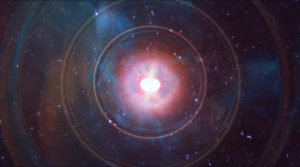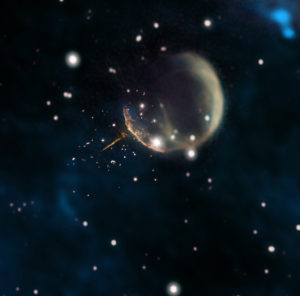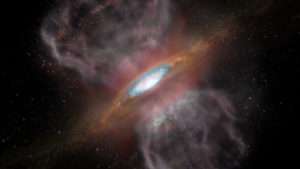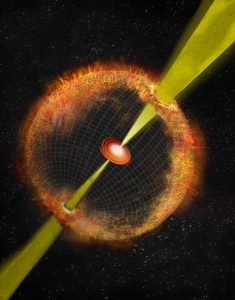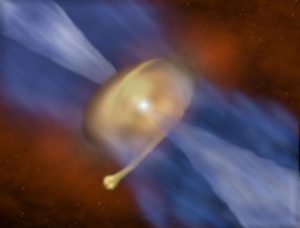Radio telescope observations have made it possible for astronomers to use mergers of neutron-star pairs as a valuable new tool for measuring the Universe’s expansion.
Astronomers Find “Cannonball Pulsar” Speeding Through Space
VLA image shows the trail of a speeding pulsar pointing directly back at the center of the debris shell from the supernova explosion that created it.
Image Release: ALMA Shows Birth of Spiraling Giants
Using ALMA, astronomers have observed the formation and mutually entwined motions of a massive binary star system.
Liberal Sprinkling of Salt Discovered around a Young Star
ALMA discovered ordinary table salt in a not-so-ordinary location: 1,500 light-years from Earth in the disk surrounding a massive young star.
Astronomers Study Mysterious New Type of Cosmic Blast
Astronomers have studied a perplexing cosmic blast with a worldwide collection of telescopes, including ALMA and the VLA, but still are not sure exactly what it is.
Fragmenting Disk Gives Birth to Binary Star ‘Odd Couple’
ALMA has detected a star in a binary system that may have formed like a planet.






